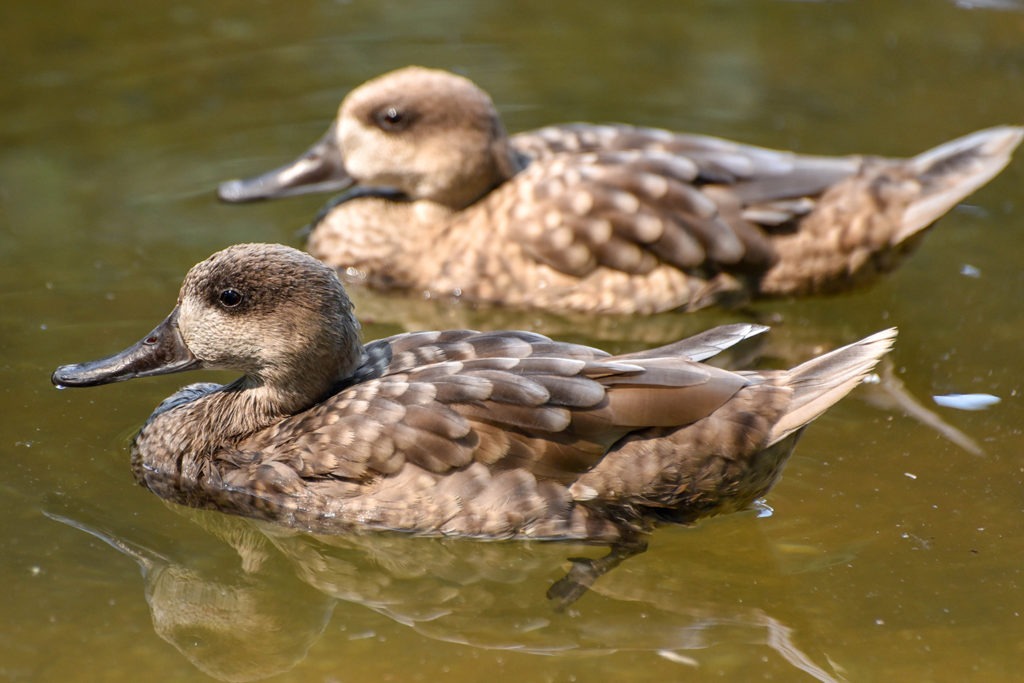Overview
“Where I live”
Populations of marbled teal are scattered throughout the Mediterranean basin and into Russia, Turkey, Kazakhstan, Afghanistan, Pakistan, Iran, and northwest India. This species of waterfowl favors freshwater and brackish ponds and lakes with well-vegetated shorelines. Check them out at the Aviary in the African Journey section of the Maryland Zoo.
“How I live there”
Marbled teal are usually found together in small groups and, outside of breeding season, sometimes in larger flocks of up to a few thousand birds. They are relatively quiet ducks. They are most active in the early morning and evening, and rest in the shelter of vegetation during the day. They feed by dabbling in shallow water, filtering mud and sifting food through their beaks. Sometimes they also will dive or up-end for food. They feed on small seeds and aquatic invertebrates.
“Making my mark”
Marbled teal fly low and slowly and have noticeably long necks and wings. They are easily identifiable in flight.
“What threatens me”
Marbled teal are targeted by hunters and egg collectors when on their breeding grounds. They are vulnerable to other predation as well but are most threatened by habitat loss. They have lost enormous amounts of habitat in the last century due to the conversion of wetlands (draining and filling) to agricultural land. Pollution, lead poisoning, and accidental trapping in fishing nets are other contributors to population decline.
Raising Young
Marbled teal pair up during the winter. Pairs travel north to breeding grounds together, although some mates are still being chosen upon arrival at breeding grounds. A pair chooses a nesting site, usually on the ground at the water’s edge under cover of vegetation. Male and female stay together until the female starts incubating her eggs, at which time her mate abandons her. She will stay on the nest for 25-27 days and then care for her hatchlings for another two months or so, until they fledge.
Conservation
Marbled teal are listed as vulnerable by the IUCN, the world’s leading conservation organization. The species has suffered widespread loss of habitat, and populations have been in decline for many decades. Less than 20,000 marbled teal now remain in the wild.
Several countries where marbled teal breed or winter now offer the species legal protection, including Morocco, Spain, Russia, and Turkey. In some areas, local populations are beginning to increase. Conservation programs include raising awareness among hunters and trying to decrease the number of birds shot each year.
Taxonomy
- Kingdom: Animalia
- Phylum: Chordata
- Subphylum: Vertebrata
- Class: Aves
- Order: Anseriformes
- Family: Anatidae
- Genera: Marmaronetta
- Species: angustirostris

